IdentityServer4-MVC+Hybrid实现Claims授权验证(四)
上节以对话形式,大概说了几种客户端授权模式的原理,这节重点介绍Hybrid模式在MVC下的使用。且为实现IdentityServer4从数据库获取User进行验证,并对Claim进行权限设置打下基础(第五节介绍)。
本节内容比较多,且涉及一、二节的内容,如有不懂,可先熟悉一、二节知识。
一、新建授权服务,命名为AuthServer#
(1)新建Web API项目,不用配置HTTPS,不进行身份验证。
设置成控制台方式运行,端口设为5000。
安装IdentityServer4包
在Config.cs类中,添加如下代码:
public class Config { public static List<TestUser> GetUsers() { return new List<TestUser> { new TestUser { SubjectId = "1", Username = "test", Password = "123", Claims = new List<Claim> { new Claim("role", "user") } }, new TestUser { SubjectId = "2", Username = "admin", Password = "123", Claims = new List<Claim> { new Claim("role", "admin") } } }; } public static IEnumerable<IdentityResource> GetIdentityResources() { return new List<IdentityResource> { new IdentityResources.OpenId(), new IdentityResources.Profile(), //new IdentityResource("roles","role",new List<string>{ "role"}) }; } public static IEnumerable<ApiResource> GetApiResources() { return new List<ApiResource> { new ApiResource("api1", "My API") //new ApiResource("api1", "My API",new List<string>(){ "role"}) }; } // clients want to access resources (aka scopes) public static IEnumerable<Client> GetClients() { return new List<Client> { new Client { ClientId = "AuthServer", AllowedGrantTypes = GrantTypes.ClientCredentials, ClientSecrets = { new Secret("secret".Sha256()) }, AllowedScopes = { "api1" }, Claims= new List<Claim>(){new Claim("role","AuthServer") }, ClientClaimsPrefix = "" }, // OpenID Connect implicit flow client (MVC) new Client { ClientId = "mvc", ClientName = "MVC Client", AllowedGrantTypes = GrantTypes.Hybrid, ClientSecrets = { new Secret("secret".Sha256()) }, // where to redirect to after login RedirectUris = { "http://localhost:5002/signin-oidc" }, // where to redirect to after logout PostLogoutRedirectUris = { "http://localhost:5002/signout-callback-oidc" }, AllowedScopes = new List<string> { IdentityServerConstants.StandardScopes.OpenId, IdentityServerConstants.StandardScopes.Profile, //"roles" } } }; } }
这里IdentityResource映射于那些关于用户信息的scope, ApiResource映射于API资源的scopes。
(2)打开Startup.cs,在ConfigureServices里面调用AddIdentityServer来把Identity Server注册到ASP.NET Core的容器里面;随后我调用了AddDeveloperSigningCredentials方法,它会创建一个用于对token签名的临时密钥材料(但是在生产环境中应该使用可持久的密钥材料)
public void ConfigureServices(IServiceCollection services) { services.AddMvc(); services.AddIdentityServer() .AddDeveloperSigningCredential() .AddTestUsers(Config.GetUsers()) .AddInMemoryIdentityResources(Config.GetIdentityResources()) .AddInMemoryApiResources(Config.GetApiResources()) .AddInMemoryClients(Config.GetClients()); }
(3)打开Configure方法,把IdentityServer添加到ASP.NET Core的管道里。
public void Configure(IApplicationBuilder app, IHostingEnvironment env) { if (env.IsDevelopment()) { app.UseDeveloperExceptionPage(); } app.UseIdentityServer(); //MVC配置 app.UseStaticFiles(); app.UseMvcWithDefaultRoute(); }
(4)然后下载登录用的UI: https://github.com/IdentityServer/IdentityServer4.Quickstart.UI
把图中三个文件复制到AuthServer项目目录下。
#
二、新建MVC客户端,命名为MvcClient#
(1)设置端口为5002。
修改Start.cs的ConfigureServices方法为:
public void ConfigureServices(IServiceCollection services) { services.Configure<CookiePolicyOptions>(options => { // This lambda determines whether user consent for non-essential cookies is needed for a given request. options.CheckConsentNeeded = context => true; options.MinimumSameSitePolicy = SameSiteMode.None; }); services.AddMvc(); JwtSecurityTokenHandler.DefaultInboundClaimTypeMap.Clear(); services.AddAuthentication(options => { options.DefaultScheme = "Cookies"; options.DefaultChallengeScheme = "oidc"; }) .AddCookie("Cookies", options => { //无权限,显示的页面 options.AccessDeniedPath = "/Authorization/AccessDenied"; }) .AddOpenIdConnect("oidc", options => { options.SignInScheme = "Cookies"; options.Authority = "http://localhost:5000"; options.RequireHttpsMetadata = false; options.ClientId = "mvc"; options.ResponseType = "code id_token"; options.Scope.Clear(); options.Scope.Add("openid"); options.Scope.Add("profile"); //options.Scope.Add("roles"); options.SaveTokens = true; options.ClientSecret = "secret"; options.GetClaimsFromUserInfoEndpoint = true; //options.ClaimActions.MapUniqueJsonKey("role", "role"); //options.TokenValidationParameters = new TokenValidationParameters //{ // NameClaimType = JwtClaimTypes.GivenName, // RoleClaimType = JwtClaimTypes.Role //}; }); }
AddAuthentication方法来添加和配置身份认证中间件。这里使用Cookie作为验证用户的首选方式,而DefaultScheme = "Cookies",这个"Cookies"字符串是可以任意填写的,只要与后边的一致即可。但是如果同一个服务器上有很多应用的话,这个Scheme的名字不能重复。
DefaultChanllangeScheme设为"oidc", 这个名字与后边配置OpenIdConnect的名字要一样. 当用户需要登陆的时候, 将使用的是OpenId Connect Scheme。
AddCookie其参数是之前配置的DefaultScheme名称,这配置了Cookie的处理者,并让应用程序为我们的DefaultScheme启用了基于Cookie的身份认证。一旦ID Token验证成功并且转化为Claims身份标识后,这些信息就将会保存于被加密的Cookie里。
AddOpenIdConnect方法添加了对OpenID Connect流程的支持,它让配置了用来执行OpenId Connect 协议的处理者。这个处理者会负责创建身份认证请求,Token请求和其它请求,并负责ID Token的验证工作。它的身份认证scheme就是之前配置的"oidc",它的意思就是如果该客户端的某部分要求身份认证的时候,OpenID Connect将会作为默认方案被触发(因为之前设置的DefaultChallengeScheme是"oidc", 和这里的名字一样)。
SignInScheme和上面的DefaultScheme一致,它保证身份认证成功的结果将会被保存在方案名为"Cookies"的Cookie里。
Authority就是Identity Provider的地址。
ClientId和Secret要与IdentityProvider里面的值一样。
请求的Scope有openid和profile,其实中间件默认也包括了这些scope,但是写出来更明确一些。
SaveTokens=true,表示允许存储从Identity Provider那里获得的tokens。
(2)修改Configure方法为:
public void Configure(IApplicationBuilder app, IHostingEnvironment env) { if (env.IsDevelopment()) { app.UseDeveloperExceptionPage(); } else { app.UseExceptionHandler("/Home/Error"); } app.UseAuthentication(); app.UseStaticFiles(); app.UseMvcWithDefaultRoute(); }
(3)然后对HomeController加上身份验证。[Authorize]
(4)再修改About的页面,显示User的Claim信息。
@{ ViewData["Title"] = "About"; } <h2>@ViewData["Title"]</h2> @*<dt>Access Token</dt> <dd>@ViewData["AccessToken"]</dd>*@ <dl> @foreach (var claim in User.Claims) { <dt>@claim.Type</dt> <dd>@claim.Value</dd> } </dl>
(5)现在,可以运行AuthServer和MvcClient项目了。
(6)输入Config文件中的TestUser的用户,密码都设为123,点击Login
查看About页面,显示了user相关的claim信息。
(7)当然,登出功能还没实现,这里先实现登出。打开图中cshtml文件
添加如下代码:
@if (User.Identity.IsAuthenticated) { <li><a asp-area="" asp-controller="Home" asp-action="Logout">Logout</a></li> }
然后在HomeController控制器中添加Logout方法
public async Task Logout()
{
await HttpContext.SignOutAsync("Cookies");
await HttpContext.SignOutAsync("oidc");
}
首先要清除本地的Cookie,这个Cookie的名字要与之前配置的默认方案里的名字一致,这一步就相当于登出MVC客户端。
后一行代码的作用是跳转回到Identity Provider,然后用户可以继续登出IDP, 也就是IDP会清除它的Cookie。
(8)接着在AuthServer中的Quickstart/Account/AccountOptions实现自动跳转回登录页面。
好了,登录登出实现完了,我们接着实现Claim权限限制。
#
三、为MVC客户端设置Claim身份验证#
(1)添加TestUser的Claim中Type为role
(2)定义用户信息scope的role信息
第一个参数是scope的名字,第二个参数是scope的显示名,第三个参数是它所包含的claim类型,这里就是“role”。
(3)然后还需要客户端允许请求“roles”这个scope
(4)MVC客户端的配置,打开MVC的startup,添加“roles”这个scope:options.Scope.Add("roles");
把role claim 映射到User.Claims里:options.ClaimActions.MapUniqueJsonKey("role", "role");
role claim映射成ASP.NET Core MVC可以识别的角色Roles。
options.TokenValidationParameters = new TokenValidationParameters { NameClaimType = JwtClaimTypes.GivenName, RoleClaimType = JwtClaimTypes.Role };
这样MVC中的role就可以识别User.Claims的role了。
(6)最后在MvcClient项目HomeController中 About前,加上role为admin身份验证。[Authorize(Roles ="admin")]
然后运行,先用test账号登录进行验证。
发现点About页面没有权限进不去
然后登出,换admin账号登录
User.Claims的role成功被MVC中角色role识别,展示About页面。
这节主要介绍Hybrid在MVC下的使用,包括User的登录登出和Claim对MVC的身份授权。
然而,这只是针对内存用户TestUser进行操作的,显示实际项目中不能满足我们需求。下节将在本节的基础上介绍如何实现IdentityServer4从数据库获取User进行验证并对Claim进行身份验证。
作者: 烟花易冷人憔悴
出处:https://www.cnblogs.com/FireworksEasyCool/p/10181525.html
版权:本文采用「署名-非商业性使用-相同方式共享 4.0 国际」知识共享许可协议进行许可。





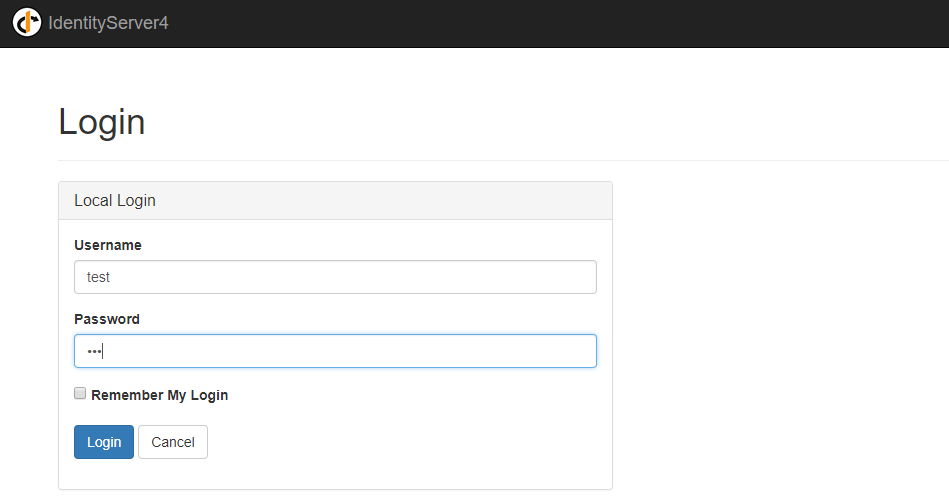
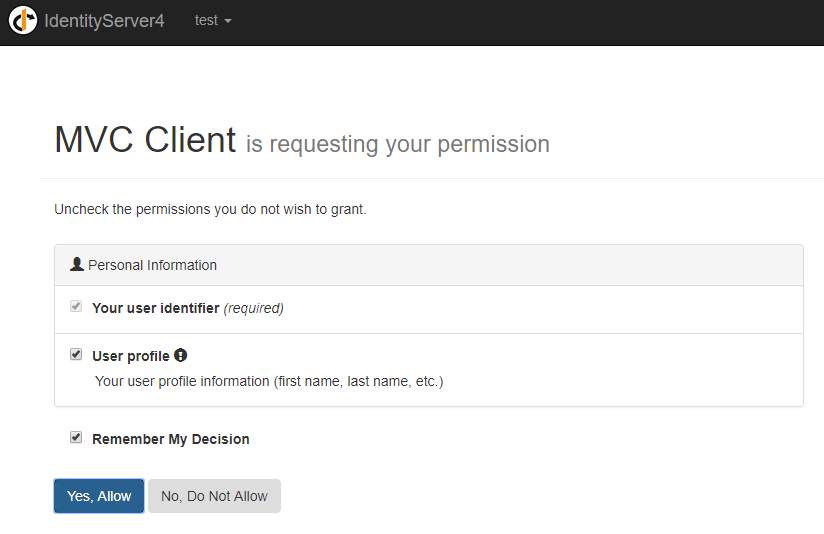
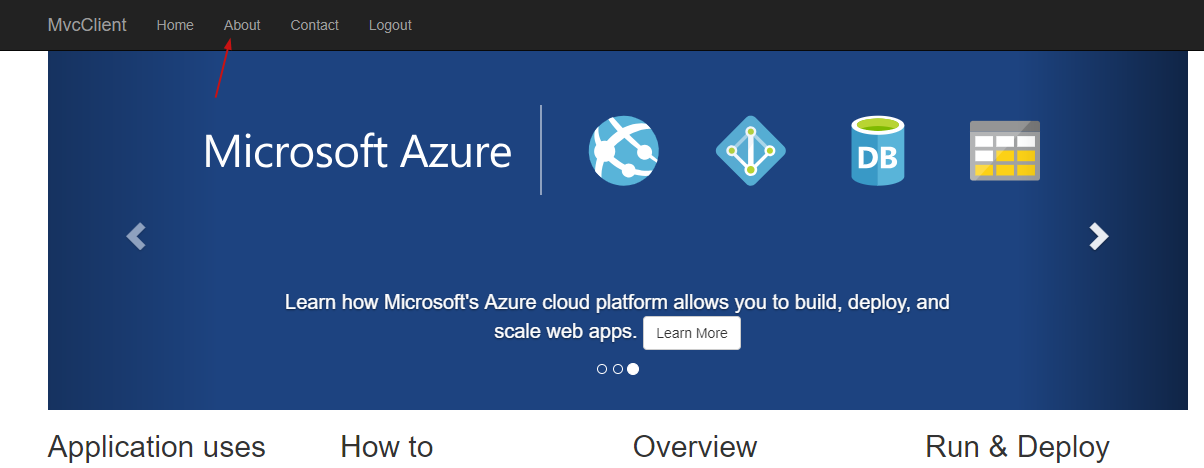
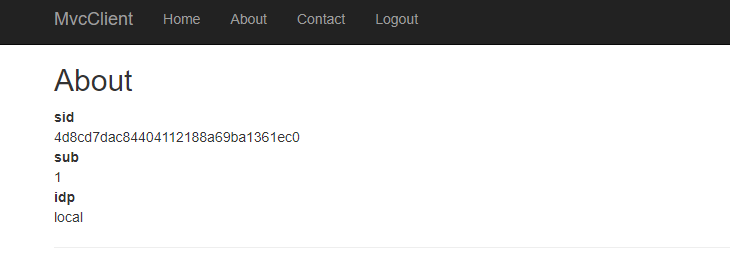
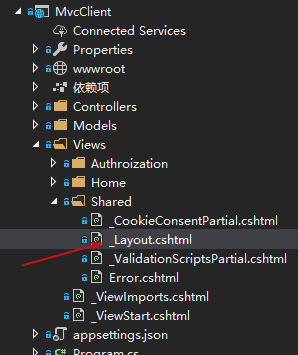




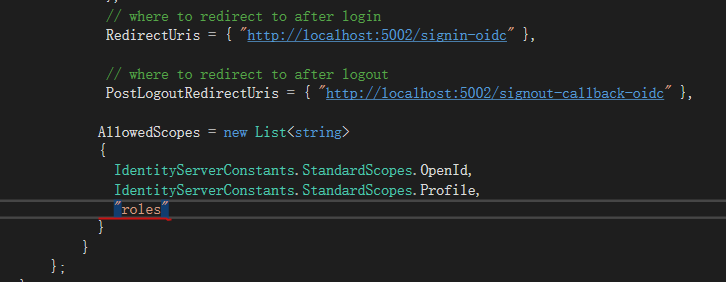
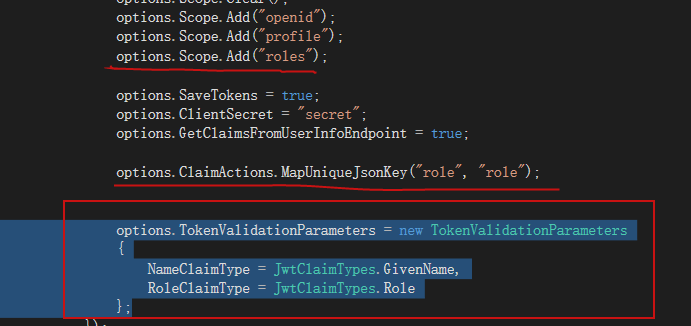

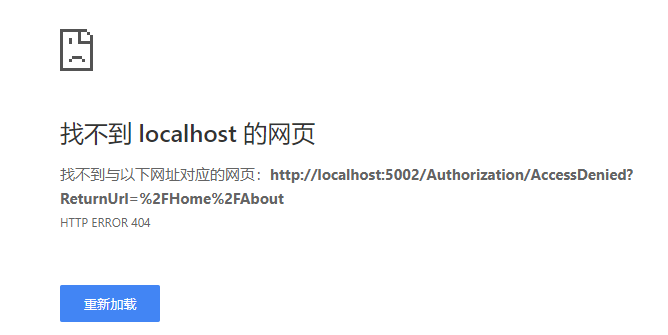
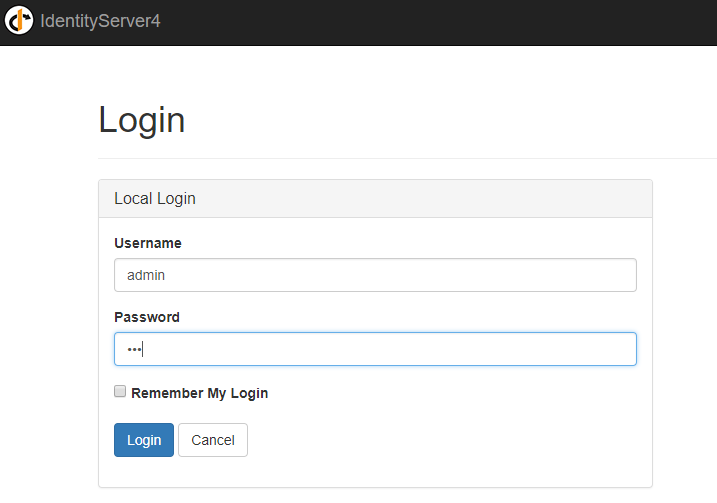
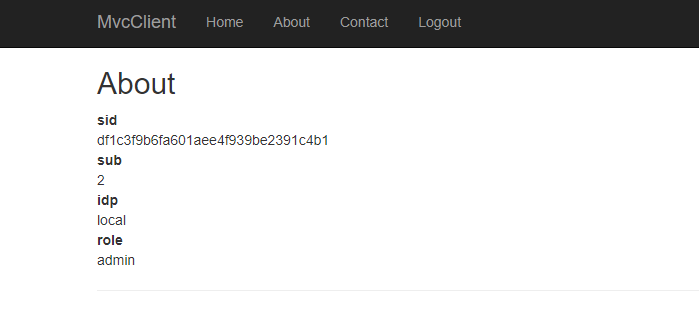


【推荐】国内首个AI IDE,深度理解中文开发场景,立即下载体验Trae
【推荐】编程新体验,更懂你的AI,立即体验豆包MarsCode编程助手
【推荐】抖音旗下AI助手豆包,你的智能百科全书,全免费不限次数
【推荐】轻量又高性能的 SSH 工具 IShell:AI 加持,快人一步
· 如何编写易于单元测试的代码
· 10年+ .NET Coder 心语,封装的思维:从隐藏、稳定开始理解其本质意义
· .NET Core 中如何实现缓存的预热?
· 从 HTTP 原因短语缺失研究 HTTP/2 和 HTTP/3 的设计差异
· AI与.NET技术实操系列:向量存储与相似性搜索在 .NET 中的实现
· 周边上新:园子的第一款马克杯温暖上架
· Open-Sora 2.0 重磅开源!
· 分享 3 个 .NET 开源的文件压缩处理库,助力快速实现文件压缩解压功能!
· Ollama——大语言模型本地部署的极速利器
· DeepSeek如何颠覆传统软件测试?测试工程师会被淘汰吗?